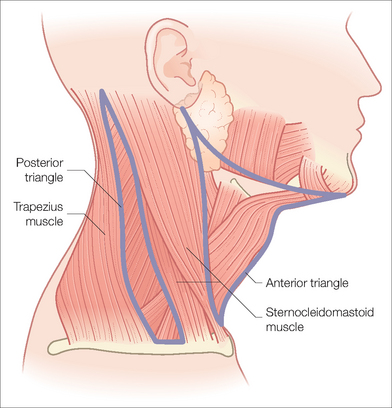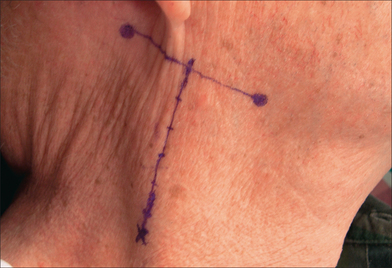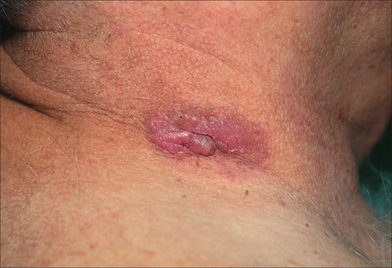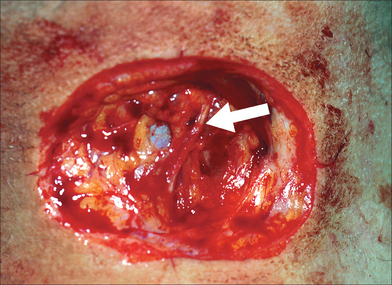Chapter 17 The Neck
The abundant skin and generous laxity of the neck make it an ideal setting for excellent surgical outcomes. The relaxed skin tension lines of the neck are easily identified, and when a surgical repair is properly aligned, the resulting scar is often almost invisible.
RELEVANT ANATOMY
The anterior neck has been divided into anterior and posterior triangles (Figure 17.1). The boundaries of the anterior triangle of the neck are the anterior margin of the sternocleidomastoid muscle, the inferior margin of the mandible, and the midline.
The most important anatomic structure to avoid during cutaneous surgery on the neck is the spinal accessory nerve (cranial nerve XI). This nerve emerges from under the sternocleidomastoid muscle and travels diagonally downward until it dives under the trapezius muscle (Figure 17.2). Because it innervates the trapezius muscle, damage to the spinal accessory nerve will result in winging of the scapula, difficulty in arm abduction, and shoulder pain. Erb’s point is the location where the spinal accessory nerve emerges from under the sternocleidomastoid muscle. It can be located by bisecting a horizontal line that connects the mastoid process and the angle of the mandible, and dropping a perpendicular line 6 cm inferiorly to where it intersects the posterior border of the sternocleidomastoid muscle (Figure 17.3).
It is surprising how easily the spinal accessory nerve can be reached during surgery. Only the skin, subcutaneous fat, and superficial fascia protect it. In patients with thin skin and minimal adipose tissue, it can be remarkably superficial (Figures 17.4, 17.5).
The superficial cervical plexus also emerges near Erb’s point from the posterior border of the sternocleidomastoid muscle, and includes the following sensory nerves: the lesser occipital nerve, the great auricular nerve, the transverse cervical nerve, and the supraclavicular nerve. These nerves provide sensation to an area that begins with the anterior and lateral neck and moves superiorly to include much of the ear and mastoid region (Figure 17.6).












